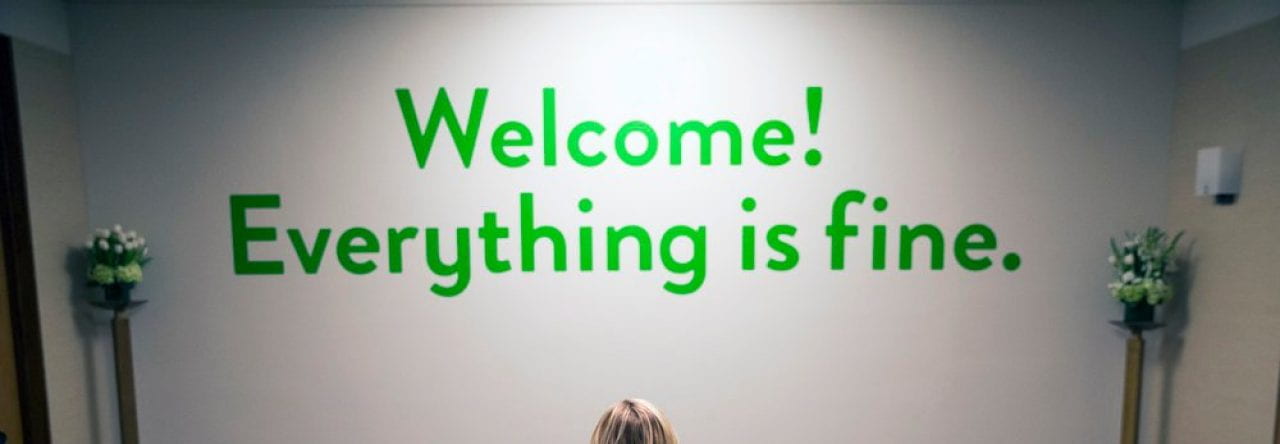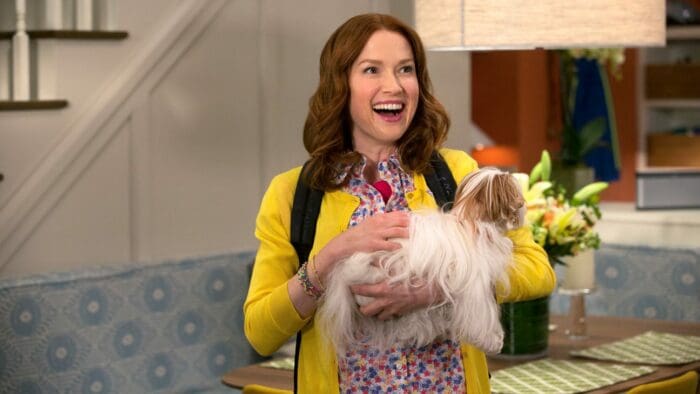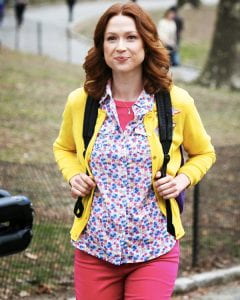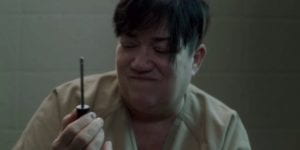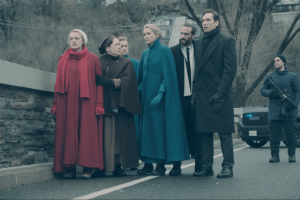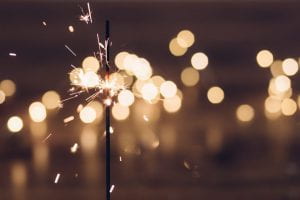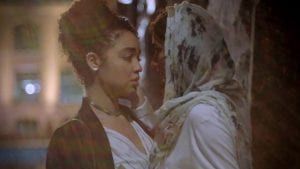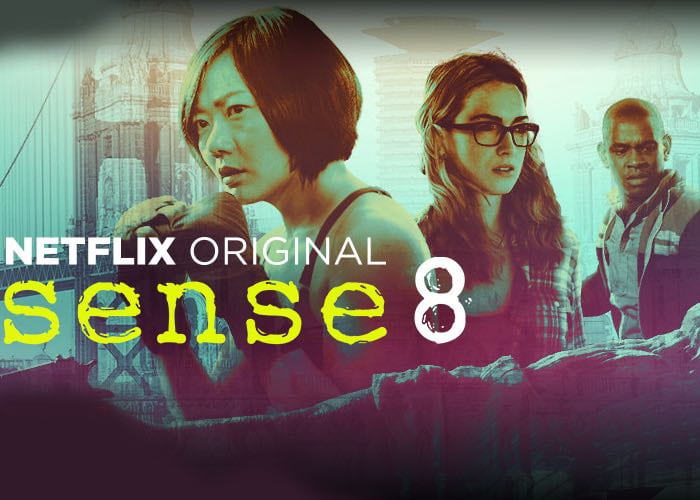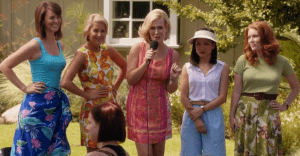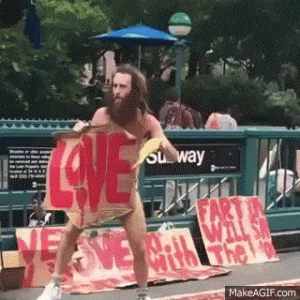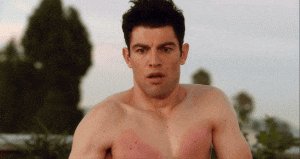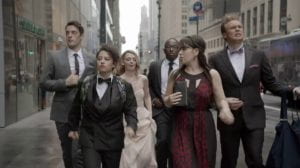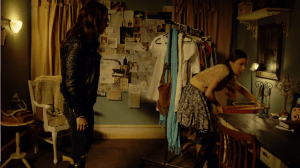In Crazy Ex Girlfriend, dark subject matter is often juxtaposed with a cheery tone (example: the cartoon sun in the intro that joyfully sings “She’s so broken inside”). The general color scheme of Crazy Ex Girlfriend provides the same kind of optimistic contrast to Rebecca’s serious mental health issues. Often, light, bright colors dominate the scene. From the setting of the scene (think the bright green walls of the bar that Greg works at, or Rebecca’s white and airy house) to the clothing the characters wear (like Rebecca and Paula’s work outfits), bright colors can be found everywhere.
In addition to providing a cheerful visual tone, color is also used symbolically, especially in the outfits worn by the women of the show. For example, in Episode 6 My First Thanksgiving With Josh!, Rebecca and Valencia display their clashing personalities and methods through the clothing they wear. While Rebecca wears light blue throughout the episode, symbolizing her thoughtfulness and how she strategizes winning over Josh’s parents in order to win over Josh, Valencia wears a dark red dress that connotes her vibrant sexuality and how she uses sex to win Josh over after a fight. In the same episode, Josh’s mother Mrs. Chan wears a light pink sweater which corresponds perfectly to her nurturing personality.
In all honestly, the direction is very standard for a TV show. Quick cuts are used during conversations to display a person’s face as they speak; long shots are usually reserved for a character’s pensive expression as they mull something over or have a realization. Where the show really takes off directorially is during the musical numbers, which are shot in a variety of ways. Earlier in the show, when Greg sings “Settle For Me,” the sequence is shot in the style of ‘3os musicals, a la Ginger Rogers and Fred Astaire, with uninterrupted shots of them dancing in black and white. In Episode 6, which features a lovely number named “I Give Good Parent,” however, the show goes a more MTV route, with shots where the camera rotates around a still figure, and shadows are used to convey power and sensuality. The musical number are where the true talent (as well as often the true feelings of the characters) of the show’s cinematography comes out.

Another stunning example of Crazy Ex Girfriend’s directorial versatility
